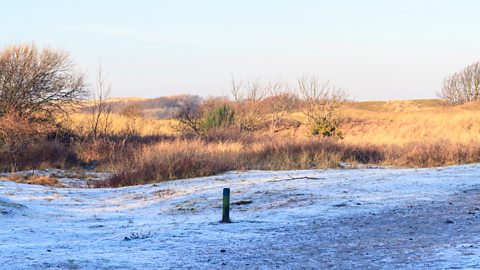Hazardous weather - anticyclones
Anticyclones are the opposite of depressions - they are an area of high atmospheric pressure where the air is sinking.
As the air is sinking, not rising, no clouds or rain are formed. This is because as the air sinks it warms, meaning it can hold more water.
The absence of fronts means winds may be very light. Consequently, high-pressure areas are often associated with settled, dry and bright conditions.
In summer, anticyclones bring dry, hot weather. In winter, clear skies may bring cold nights and frost. In cold conditions, anticyclones may also bring fog and mist. This is because the cold forces moisture in the air to condense at low altitudes.

Hottest ever day in the UK
The Met Office confirmed a new temperature record of 40.3 ยฐC (104.5 ยฐF) was reached in Coningsby, England on 19 July 2022, surpassing the previous highest recorded temperature in Cambridge, England in 2019 of 38.7 ยฐC (101.7 ยฐF).
In Wales, the hottest temperature ever recorded is 37.1 ยฐC (98.8 ยฐF) on 18 July 2022 at Hawarden Airport, Flintshire.
Impacts
Social
- Old age pensioners (OAPs) suffer during heatwaves.
- A risk of heatstroke and sunburn increases, with longer term impacts of heat exhaustion and even skin cancer.
- Water restrictions were put in place which limits availability to homes and businesses. In some regions of southern England hosepipe bans were introduced.
- Hay fever sufferers have a difficult time with some temporarily hospitalised.
Economic
- Rail and road services were disrupted because of a risk of โbucklingโ on the lines.
- Crops in southern England suffered drought which cost farmers millions in lost revenue.
- Sick leave increases as people become too unwell to work or choose to take time off to enjoy the weather โ so businesses suffer a reduction in incomes.
Environmental
- Vegetation dried up which led to wildlife issues. Birds and other insects are unable to find suitable habitats.
- Areas with high traffic volumes experience a rise in pollution levels.
- Reservoir and river levels drop to dangerous levels.